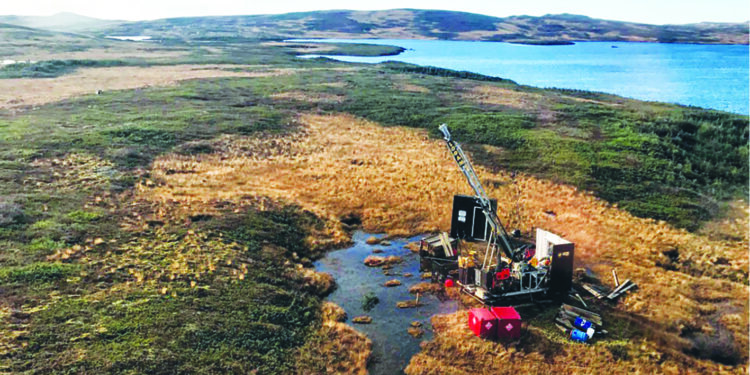Average Recoveries Of 96% Achieved From Gold Samples
Matador Mining Limited (ASX: MZZ; OTCQX: MZZMF) has received positive results from the second round of laboratory-based metallurgical test work undertaken for the Cape Ray Gold Project in Newfoundland which achieved average gold recoveries of 96% from a combined gravity and cyanide leach process.
Executive Chairman, Ian Murray, said the expanded metallurgical test work programme demonstrates average laboratory gold recoveries of 96%.
Gravity test work results improved compared to previous results with recoveries up to 70% (averaging 53%) compared to 26% (average) reported from previous programmes, while combined gravity / cyanide leach gold extractions range from 90 – 98%, with average gold recovery of 96% and silver recovery of 68% over a 48-hour leach residence time
The Central Zone and Window Glass Hill, which account for approximately 90% of the total Cape Ray JORC resource, were the focus for this metallurgical test work programme.
Mr Murray said the company’s Scoping Study flowsheet for Cape Ray was further validated by this metallurgical test work programme,
“These metallurgical results confirm that the material Mineral Resources so far defined at the Cape Ray Gold Project are amenable to conventional processing technologies and have the potential to deliver high gold recoveries under relatively modest conditions. In addition to the positive gold recovery results, optimisation work around the leaching process also indicates a further opportunity to reduce plant operating costs compared to those assumed previously,” Mr Murray said.
“We plan to continue to build on this programme of work so that a detailed geometallurgical/domain model can be developed and used in our ongoing Study Work, providing further confidence in the reported results.”
Sample Characterisation
The test work programme used samples selected primarily from diamond drill core from the 2019 drill programme completed by Matador and supplemented by five historical diamond drill holes that were stored at the Department of Natural Resources core storage facility in Pasadena, Newfoundland, Canada.
Two composite samples were produced representing the two main ore types; graphitic schist hosted, and granite hosted mineralisation. An additional 18 variability samples were selected from Central Zone (04, 41, 51, PW & HZ) and Window Glass Hill to provide important additional information on metallurgical behaviour in these two main mineralised zones.
A gold deportment study was undertaken on the two composite samples to determine the gold distribution through the various minerals. This study showed that:
- Gravity concentration can be expected to be a highly efficient method for extraction of gold and silver.
- Good gold leaching recoveries should occur due the gold particles being well liberated and very small amounts of sub-microscopic gold. Finer grinds would be required to increase silver recoveries due to the larger quantities of contained sub-microscopic silver.
Future programmes will incorporate material from Isle aux Morts, the new Angus discovery and any other new discoveries identified in ongoing exploration programmes.












